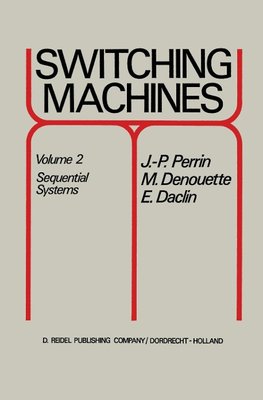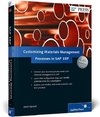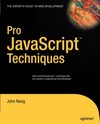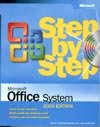
-
 Anglický jazyk
Anglický jazyk
Switching Machines
Autor: J. P. Perrin
7/Synthesis of the Tables.- 7.1. Generalizations.- 7.1.1. Introduction.- 7.1.2. Review of a sequential system¿s general equations.- 7.1.3. Normal form of the hypotheses.- 7.2. Natural methods.- 7.2.1. Ginsburg method-first case.- 7.2.1.2. The method in the... Viac o knihe
Na objednávku
148.49 €
bežná cena: 164.99 €
O knihe
7/Synthesis of the Tables.- 7.1. Generalizations.- 7.1.1. Introduction.- 7.1.2. Review of a sequential system¿s general equations.- 7.1.3. Normal form of the hypotheses.- 7.2. Natural methods.- 7.2.1. Ginsburg method-first case.- 7.2.1.2. The method in the general case.- 7.2.2. Ginsburg method-second case.- 7.2.2.1. Introductory examples.- 7.2.2.2. General statement of the method.- 7.2.3. Aizerman¿s method.- 7.2.3.1. Introductory example.- 7.2.3.2. General statement of the Aizerman method.- 7.2.3.3. Other examples of application.- 7.2.4. Asynchronous machines-Moisil-Ioanin method.- 7.3. Algebraic methods-Notion of a regular expression.- 7.3.1. Introduction.- 7.3.2. The algebra of regular expressions.- 7.4. Gloushkov method.- 7.4.1. Generalizations. Indexation of regular expressions.- 7.4.2. Examples of synthesis starting from regular expressions.- 7.4.2.1. First example.- 7.4.2.2. Second example of synthesis by the Gloushkov method.- 7.4.3. Statement of the Gloushkov method.- 7.4.4. Application of regular expression to the synthesis of asynchronous systems.- 7.4.4.1. Representation of asynchronous controls in terms of regular expressions.- 7.4.4.2. Example of synthesis of an asynchronous system.- 7.5. Conclusion.- 7.A. Brzozowski method.- 7. A.1. Basic definitions. The derivative of a regular expression with respect to a sequence of unity length.- 7. A.2. Use of the derivative to obtain the table of a machine.- Exercises.- 8/Reduction of the Number of States in a Table.- 8.1. Introduction-Statement of the problem.- 8.2. Equivalence of states.- 8.3. Reduction of complete tables.- 8.3.1. Construction of the table of equivalent pairs.- 8.3.2. Grouping of equivalent pairs.- 8.3.3. Formation of the minimal flow table.- 8.3.4. Another example of the minimization of a table.- 8.4. Reduction of incomplete tables.- 8.4.1. Basic definitions.- 8.4.2. Determination of compatible pairs.- 8.4.3. Grouping compatible terms.- 8.4.4. Choice of the M.C. and construction of the minimal flow table.- 8.4.5. Second example of reduction of an incomplete flow table.- 8.4.6. Third example of reduction.- 8.5. Programming of flow table reduction on digital computers.- 8.6. Reduction of a phase table.- 8.6.1. Equivalent states-pseudo-equivalent states.- 8.6.2. Row merging.- 8.7. Application of the method of compatible pairs to asynchronous systems.- 8.7.1. Synthesis of the reduction by Huffman¿s method.- 8.7.2. Example of the reduction of an asynchronous sequential system.- 8.7.2.1. Reduction by the method of compatible pairs.- 8.7.2.2. Reduction by the Huffman method.- 8.8. Conclusion.- Exercises.- 9/Assignment of the Internal States (Asynchronous Sequential Systems).- 9.1. Introduction.- 9.1.1. Generalizations.- 9.1.2. Asynchronous systems.- 9.1.3. Introductory example.- 9.1.4. Diverse methods and solutions.- 9.2. Connected sets.- 9.2.1. Connected sets and sequences.- 9.2.2. Application to the problem of asynchronous assignment.- 9.3. Huffman numbers.- 9.4. The influence of essential connections on the density of the assignment table.- 9.5. Reduction of the system¿s number of connections.- 9.5.1. Example 1.- 9.5.2. Example 2.- 9.5.3. Example 3.- 9.5.4. General principles of the method.- 9.5.5. Case of tables having ¿don¿t cares¿.- 9.6. Creation of supplementary unstable states.- 9.6.1. Example 4.- 9.6.2. Example 5.- 9.6.3. Remarks about the method.- 9.7. Incomplete merging of the primitive phase table.- 9.8. General remarks about assignment.- 9.9. Assignments and universal circuits.- 9.9.1. Universal assignments.- 9.9.2. Circuit with 2s0 + 1 relays (assignment by 2 s0 + 1 variables).- 9.9.3. Circuits with one relay per row (assignment by one variable per row).- Exercises.- 10/Assignment of Internal States (Synchronous Systems).- 10.1. Introduction.- 10.2. Distinct assignments-valid assignments.- 10.3. Example of the different assignments of a same table.- 10.4. Assignment from adjacency study.- 10.5. General concepts concerning partitions.- 10.5.1. Relations of order, sums, products.- 10.5.2. Use of p.s.p. for assignment.- 10.6. Search for the p.s.p..- 10.6.1. Study of the pairs.- 10.6.2. Maximal partitions.- 10.7. Properties connected with partitions p.s.p..- 10.7.1. Systems having a 2 block p.s.p..- 10.7.2. Systems having p.s.p. of more than 2 blocks.- 10.8. Use of the p.s.p. in assignment.- 10.9. Decomposition of sequential machines.- 10.9.1. Definitions.- 10.9.2. Decomposition theorem.- 10.9.3. Examples.- 10.9.4. Remarks concerning circuit realization.- 10.10. Partition pairs.- 10.10.1. Definition.- 10.10.2. Properties and particular partitions.- 10.10.3. Method for finding partition pairs.- 10.10.4. Properties connected with partition pairs.- 10.10.5. Conclusion.- 10.11. Assignment of the uncompletely specified tables.- 10.12. Extension methods.- 10.12.1. Examples of application extension of a given flow table by adding equivalent states.- 10.12.2. Example 2.- 10.12.3. Important comments.- 10.13. Assignment of internal states by taking into account the output.- 10.14. Conclusion.- Exercises.- 11/Examples of Applications.- 11.1. Introduction.- 11.2. Applications on computers.- 11.2.1. Shift register-logical flip-flop.- 11.2.2. Algebraic binary adder-deducter.- 11.2.3. Transfer authorization from one register to another.- 11.2.4. Reduction of a microprogram¿s length.- 11.2.4.1. Statement of the problem.- 11.2.4.2. Generalizations-inputs, outputs, states.- 11.2.4.3. Application to the example.- 11.2.4.4. Points of interest.- 11.3. Sequentially controlled machines.- 11.3.1. Complex automaton.- 11.3.1.1. Preliminaries.- 11.3.1.2. Phase table.- 11.3.1.3. Conclusions.- 11.3.2. Sequential functioning in a cement¿s oven control.- 11.3.2.1. Statement of the problem.- 11.3.2.2. Definitions of the different quantities.- 11.3.2.3. Study of the sequential functioning.- 11.3.2.4. The problem put into equations.- 11.3.2.5. Note relative to the section.- 11.3.2.6. Conclusions.- 11.3.3. Marshalling trains.- 11.4. Analysis of a system of electrical airplane generation.- 11.4.1. Generalizations.- 11.4.2. Logical functioning of the system.- 11.4.2.1. Notation.- 11.4.2.2. Equations.- 11.4.2.3. Excitation matrix.- 11.4.2.4. Study of the transitions.- 11.4.3. Study of logical failures.- 11.4.3.1. Generalizations.- 11.4.3.2. Functioning without the ground generator.- 11.4.3.3. Functioning with the ground generator.- 11.4.4. Defaults in the protection boxes or phase order.- 11.4.5. Conclusions.- 11.A.1. Example of memory synthesis by the phase table method.- 11.A.1.1. Phase table.- 11.A.1. 2. Reduction of the phase table.- 11.A.1.3. Output matrix-excitation matrix 275 11. A.2. Sequential switching system on an analog computer analac A 110.- 11.A.2.1. Statement of the problem.- 11.A.2.2. Realization of the scheme.- 11.A.2.3. Generalization.- 11.A.3. Automaton with securities.- 1 1.A.3.1. Generalities.- 1 1.A.3.2. Equations-primitive phase table.- 1 1.A.3.3. Excitation table-output table.- 11.A.3.4. Introduction of the first type of security-use of delayed signals.- 11.A.3.5. Introduction of the second type security lock control.- 1 1.A.3.6. Conclusion.- 11.A.4. Simulation of sequential systems.- 11.A.4.1. Logical simulators.- 11.A.4.2. Computer simulation.- Exercises.- 12/Linear Sequential Systems.- 12.1. Introduction.- 12.1.1. Example.- 12.2. Review of algebra.- 12.2.1. Matrices and determinants.- 12.2.2. Polynomial forms-Galois theorem.- 12.2.3. Eigen values-Eigen vectors of amatrix.- 12.3. Transition of linear sequential systems.- 12.3.1. 0 Input-non-singular matrix A.- 12.3.2. Any input-non-singular matrix A.- 12.3.3. Matrix A + I.- 12.4. General configurations of linear machines.- 12.5. Discrete Laplace transform.- 12.5.1. Introduction.- 12.5.2. p-Transforms.- 12.5.2.1. I ntroduction: example of a non- periodical sequence-representation.- 12.5.2.2. Example of a periodical sequence.- 12.5.2.3. Generalization-inverse transform.- 12.5.2.4. Initial conditions.- 12.6. Study of linear systems by the discrete Laplace transform.- 12.6.1. Transfer function.- 12.6.2. Elementary linear operators.- 12.6.2.1. Transfer function of the shift.- 12.6.2.2. Representation of transfer-systematic.- 12.6.2.3. Composition of systems.- 12.6.3. Variables of state.- 12.6.3.1. Passage from the transfer function to the state representation.- 12.6.3.2. Passage from the state representation to the transfer representation.- 12.6.3.3. Comparison of the representations.- 12.7. Application.- 12.7.1. Determination of sequences from a pulse generator.- 12.7.2. Eigen functions and their applications.- 12.7.2.1. Introduction.- 12.7.2.2. Functions shifted to the left.- 12.7.2.3. Functions shifted to the right.- 12.7.2.4. Shifting to the right with conditioned memories.- 12.7.3. Transferences.- 12.8. Conclusion.- Exercises.- 13/Theoretical Study of the Real Functioning of Binary Switching Elements-Non-Binary Switching Elements.- 13.1. Many-valued algebra.- 13.2. Ternary algebra and relay systems.- 13.2.1. Ordinary contact relays.- 13.2.2. Special contact relays.- 13.3. Expression for a function defined in a set of p values.- 13.4. Characteristic equation of a relay.- 13.5. Analysis of relay systems.- 13.5.1. Contacts a, x, y, ordinary.- 13.5.2. Case in which the x and y contacts are ordinary and special.- 13.5.3. Conclusion.- 13.6. 5-valued algebra and relay systems.- 13.7. Multipositional contactors.- 13.7.1. Structure of a multipositional contactor.- 13.7.2. ? Mounting of multipositional contactors.- 13.7.3. Characteristic functions of a multipositional contactor.- 13.8. Analysis of a multipositional contactor circuit ideal functioning.- 13.9. Minimization of the conductibility function of the commutators¿ circuits.- 13.9.1. Definition of the disjunctive canonical form.- 13.9.2. Interpretation of the total order minimization condition.- 13.9.3. Interpretation of the partial order minimization condition.- 13.9.4. Application of ternary algebra.- 13.10. Synthesis of relay circuits with ordinary contacts 400 13.10.1. Action of a switch A on a relay X.- 13.10.1 Action of a switch A on a relay X.- 13.10.1.1. Engagement of a relay X by engagement of a switch A.- 13.10.1.2. Releasing a relay X by releasing a switch A.- 13.10.1.3. Engagement of a relay X by releasing a switch A.- 13.10.1.4. Release of a relay X by closing a switch A.- 13.10.2. Action of a switch A on 2 relays X and Y.- 13.10.2.1. Closing of X and Y by closing or release of A.- 13.10.2.2. Release of X and Y by closing or release of A.- 13.10.3. Real functioning of a sequential system.- 13.10.4. Synthesis of a hazard-free relay system.- 13.10.4.1. Equations of a sequential relay system.- 13.10.4.2. Hazards.- 13.10.4.3. General synthesis of the preceding example.- 13.11. Lukasiewicz algebras and their applications.- 13.11.1. Definition and properties.- 13.11.2. Characteristic equation and conductibility of a relay with several ordinary and special contacts.- 13.11.3. Real functioning of a many contact relay system.- 13.12. Conclusion.- Exercises.
- Vydavateľstvo: Springer Netherlands
- Rok vydania: 2011
- Formát: Paperback
- Rozmer: 235 x 155 mm
- Jazyk: Anglický jazyk
- ISBN: 9789401028691

 Nemecký jazyk
Nemecký jazyk 










